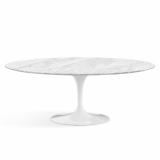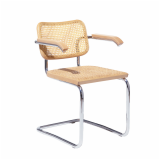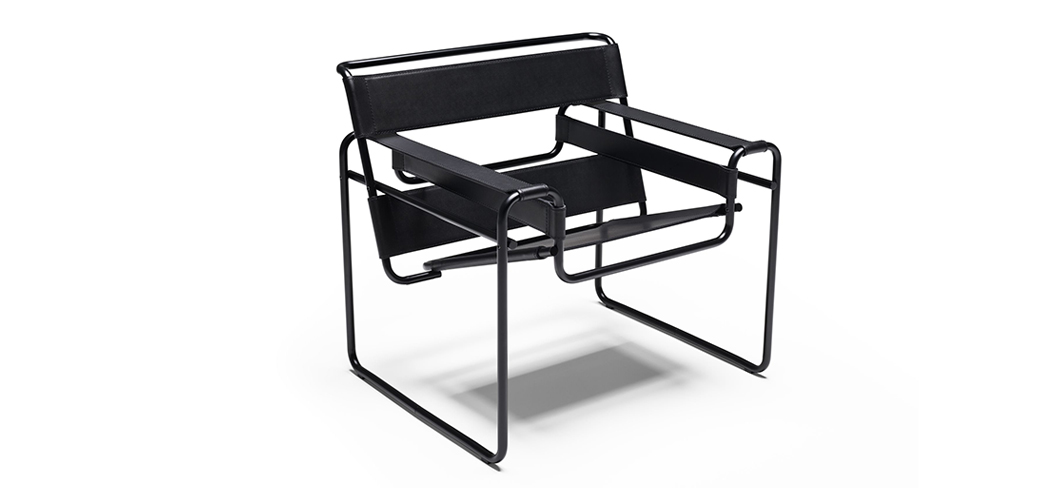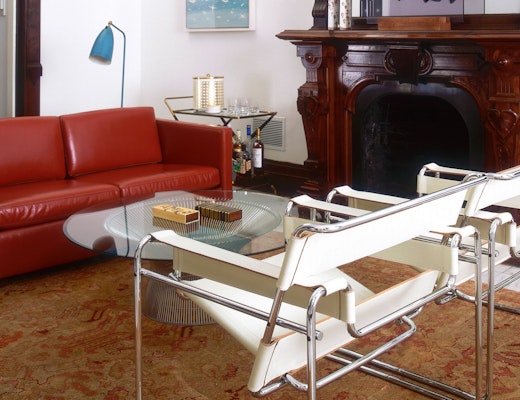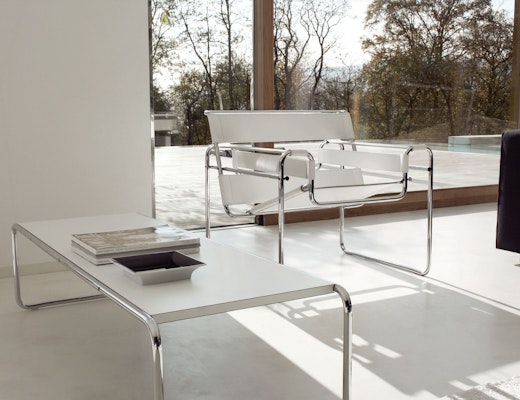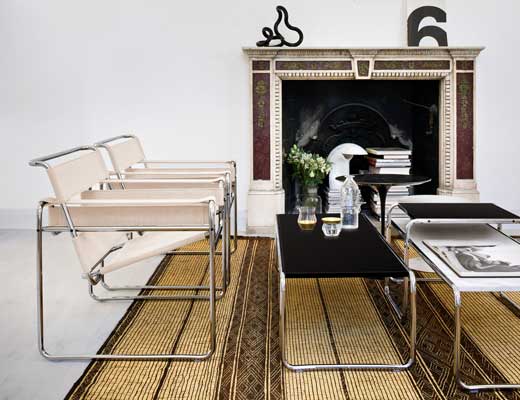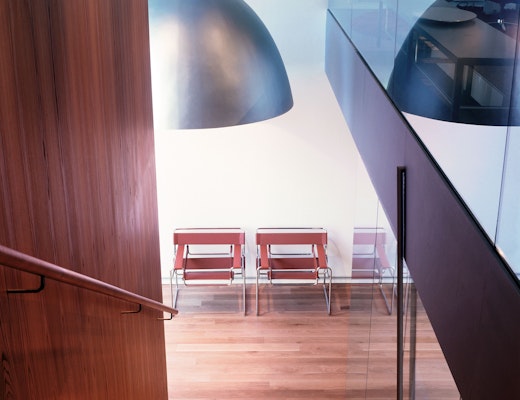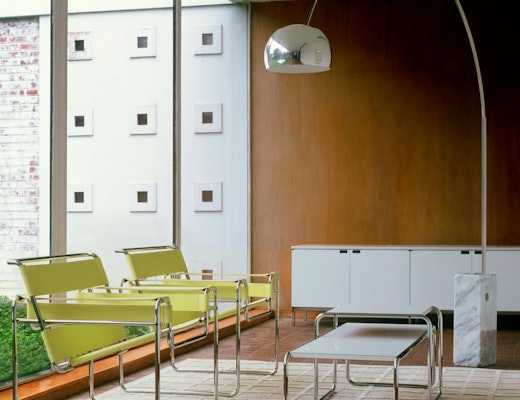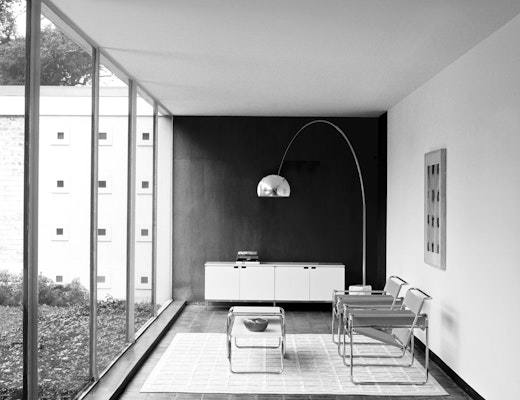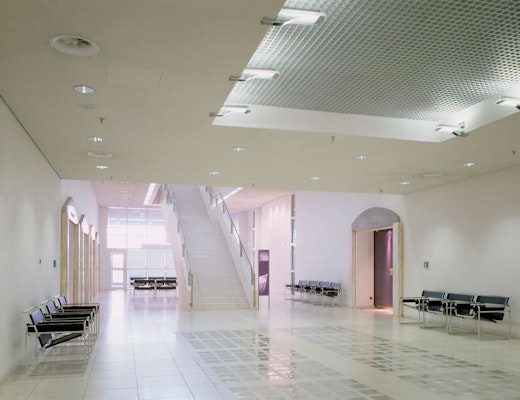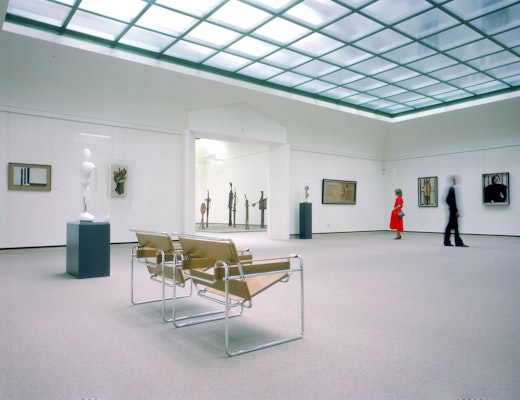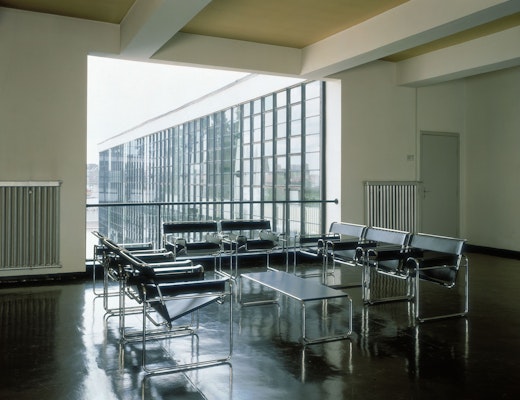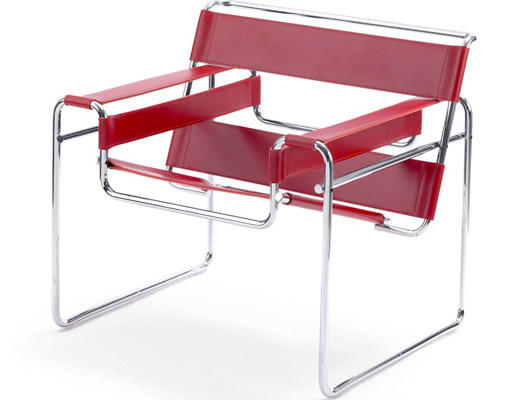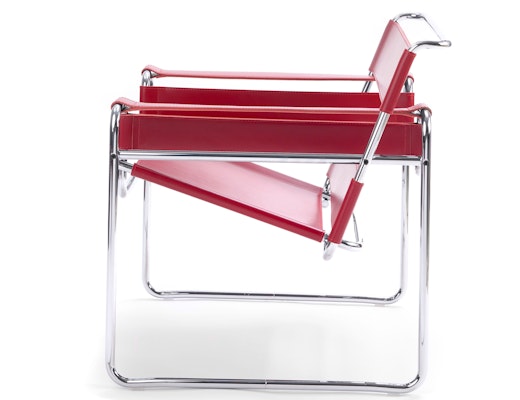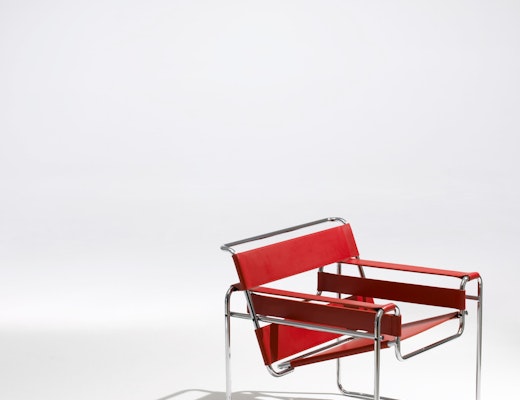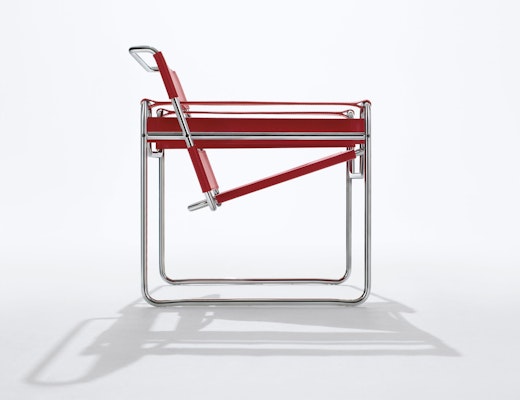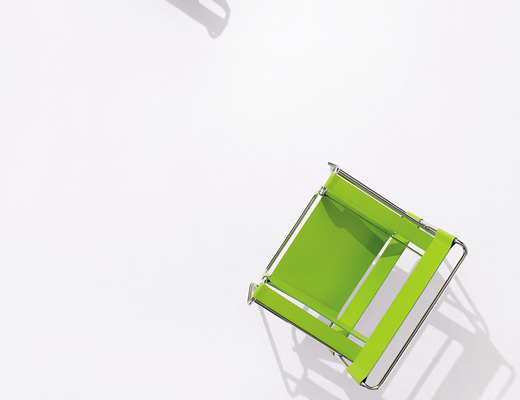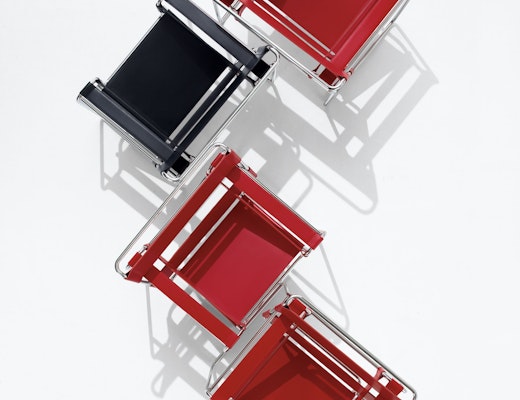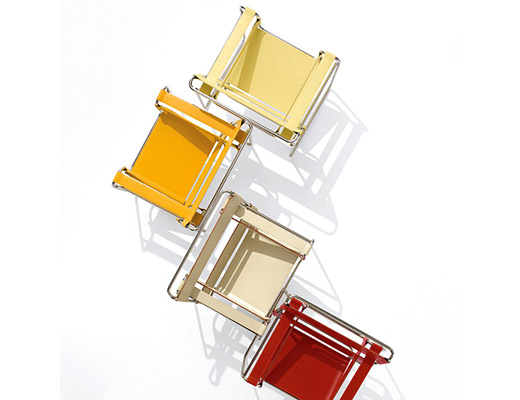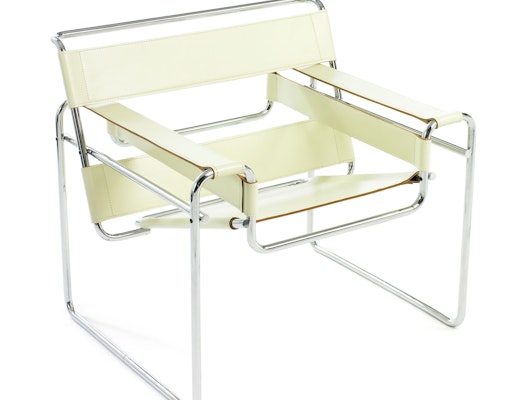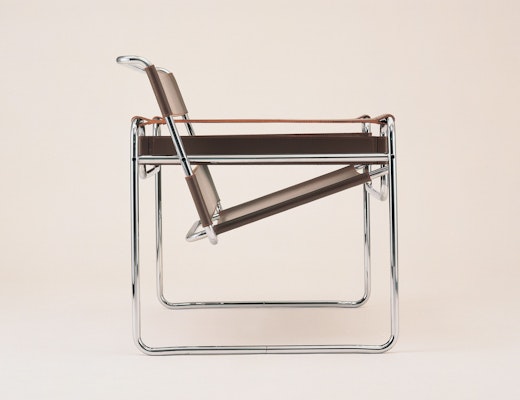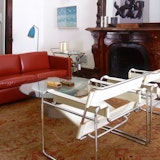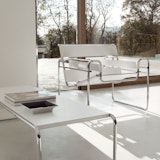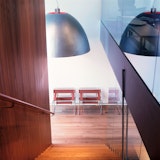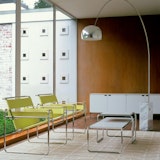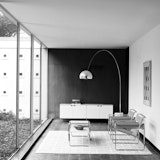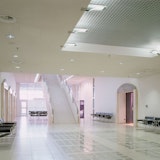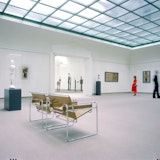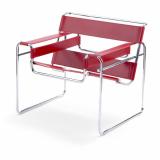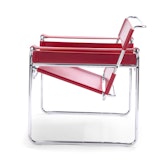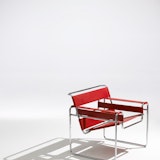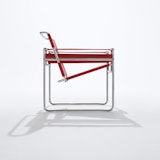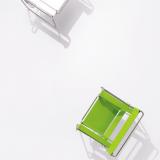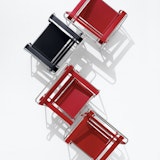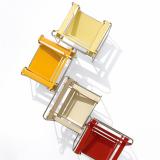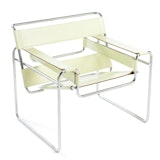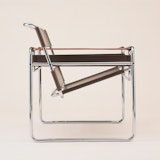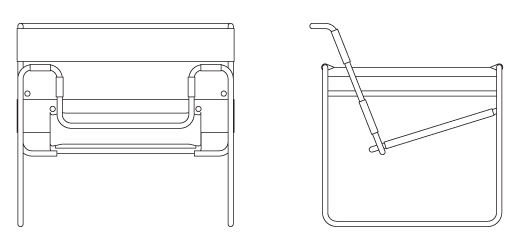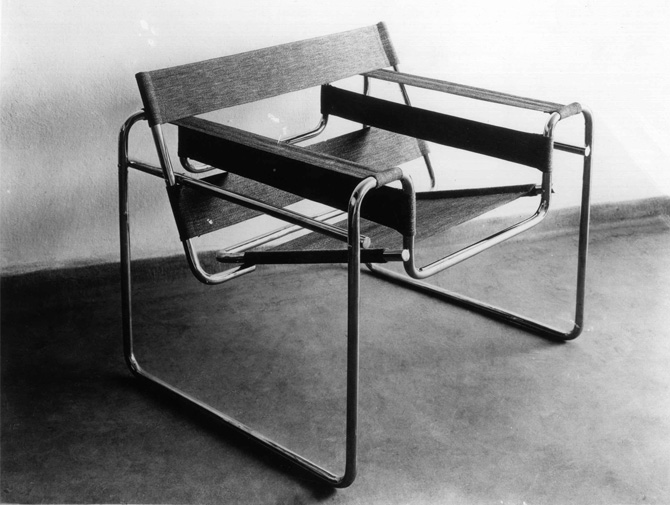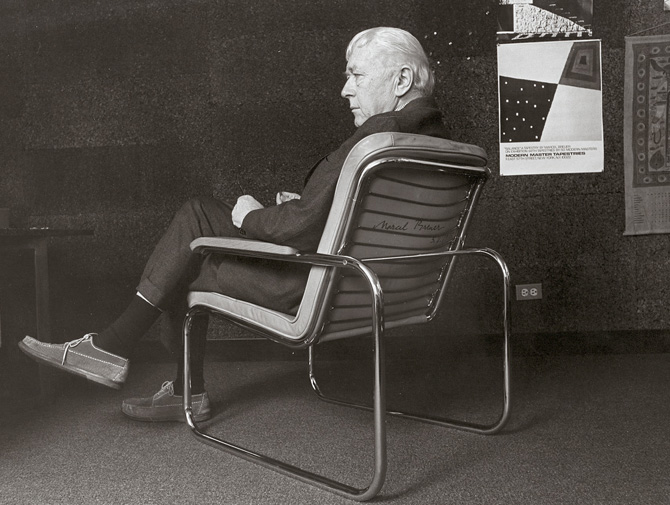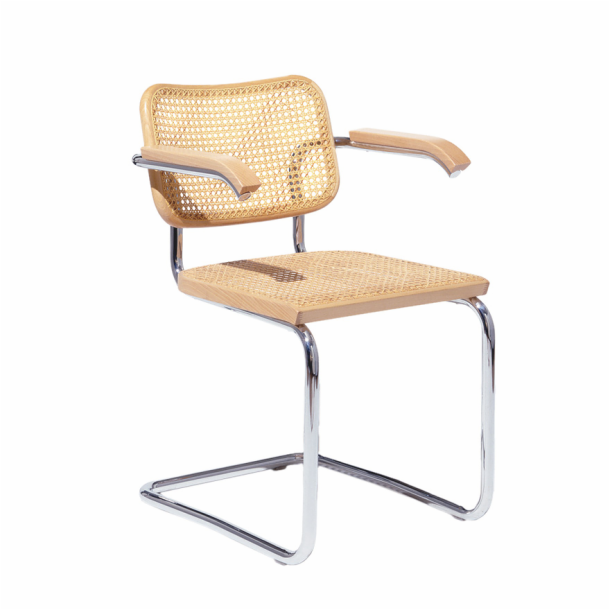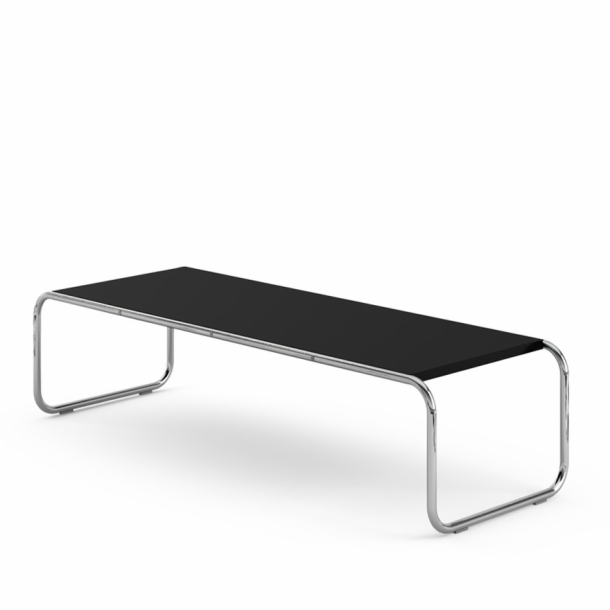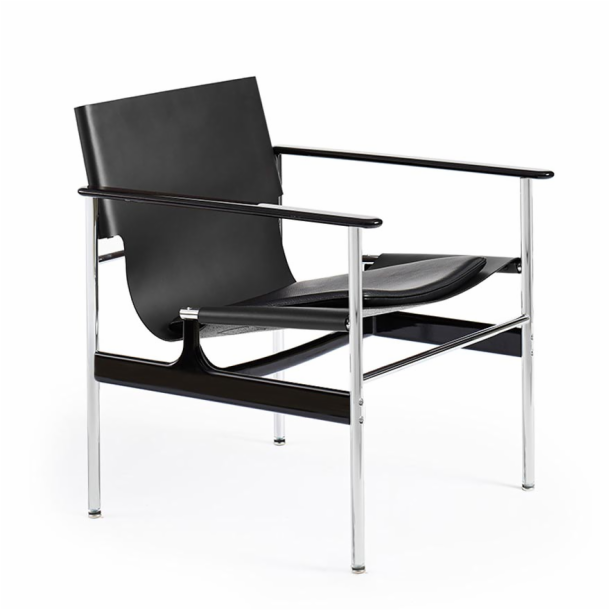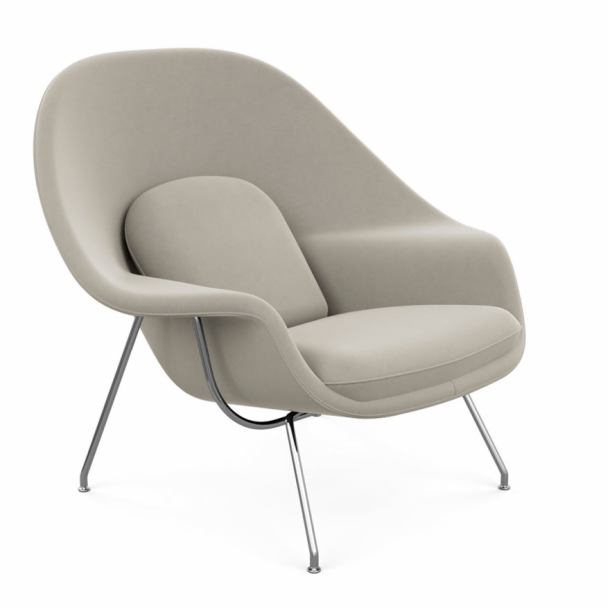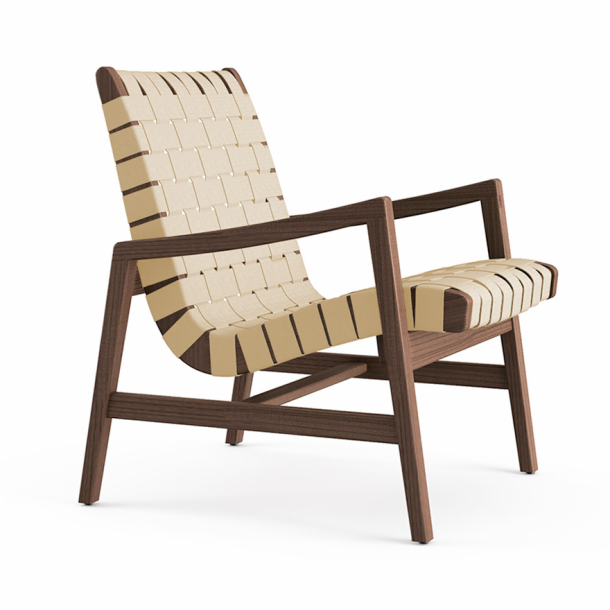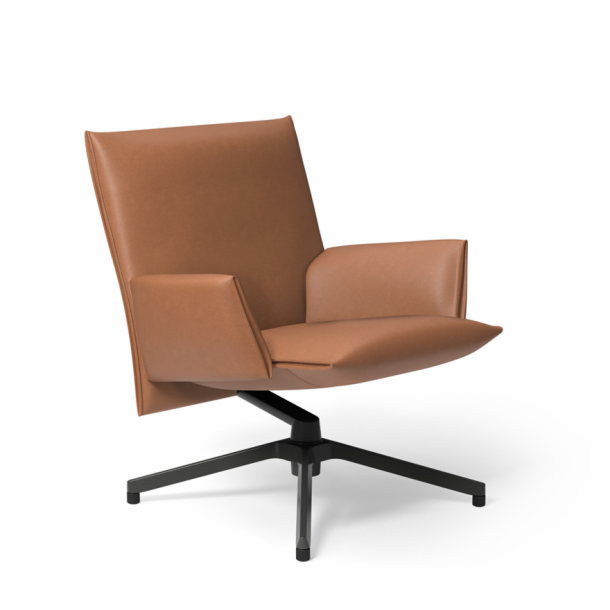In an interview with a Knoll historian, Marcel Breuer described how he came to begin experimenting with bent tubular steel while at the Bauhaus:
“At that time I was rather idealistic. 23 years old. I made friends with a young architect, and I bought my first bicycle. I learned to ride the bicycle and talked to this young fellow and told him that the bicycle seems to be a perfect production because it hasn’t changed in the last twenty, thirty years. It is still the original bicycle form. He said, “Did you ever see how they make those parts? How they bend those handlebars? You would be interested because they bend those steel tubes like macaroni.”
"This somehow remained in my mind, and I started to think about steel tubes which are bent into frames—probably that is the material you could use for an elastic and transparent chair. Typically, I was very much engaged with the transparency of the form.
"That is how the first chair was made…I realized that the bending had to go further. It should only be bent with no points of welding on it so it could also be chromed in parts and put together. That is how the first Wassily was born. I was myself somewhat afraid of criticism. I didn’t tell anyone I was doing these experiments actually. [Wassily] Kandinsky, who came by chance to my studio when the first chair was brought in, said, “What’s this?” He was very interested and then the Bauhaus got very interested in it. A year later, I had furnished the whole Bauhaus with this furniture.”







